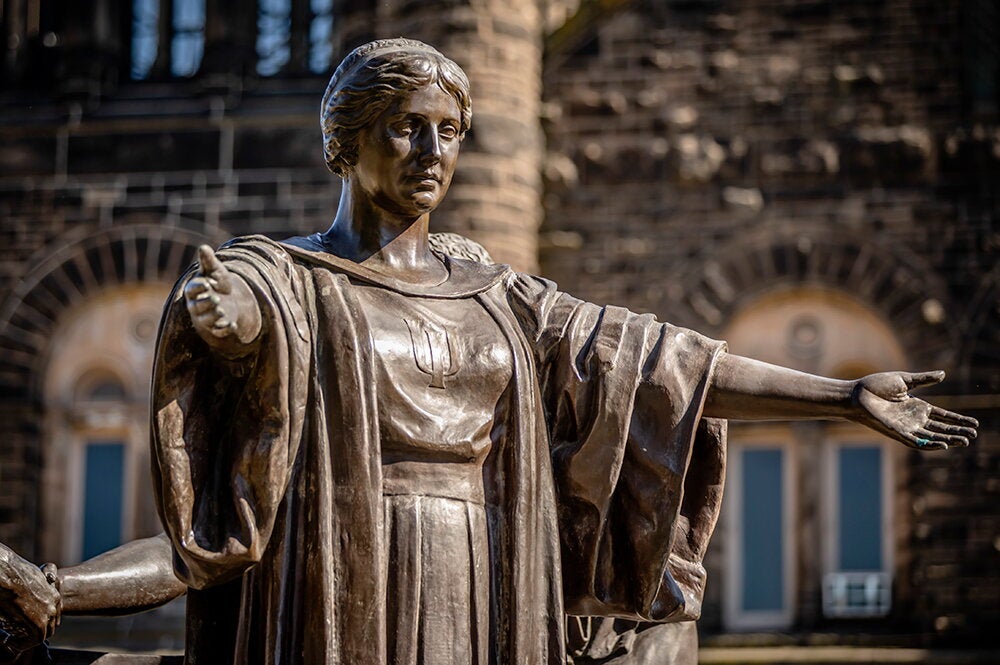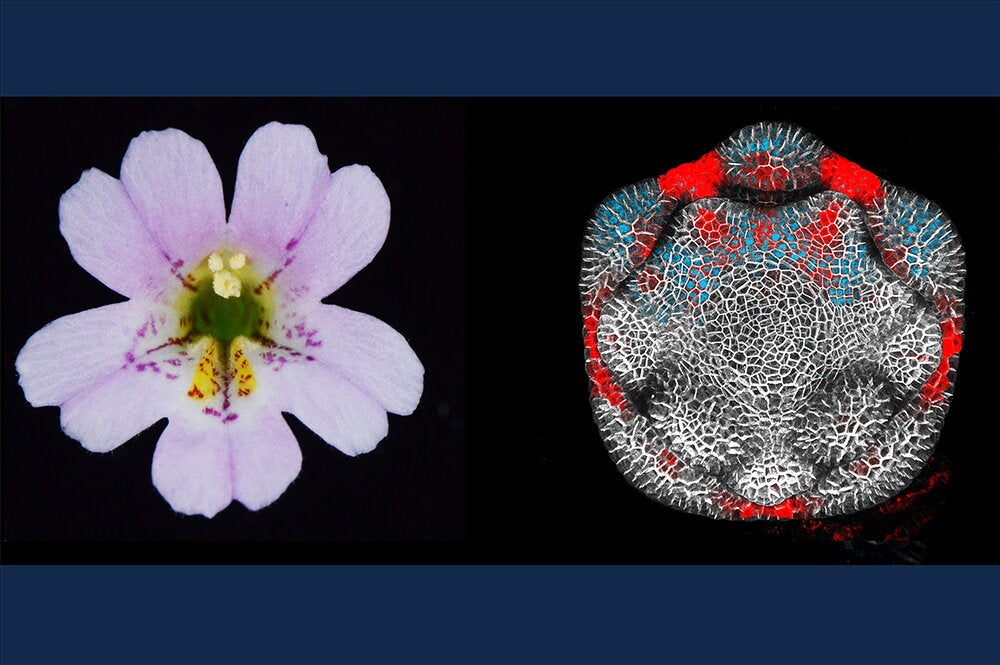
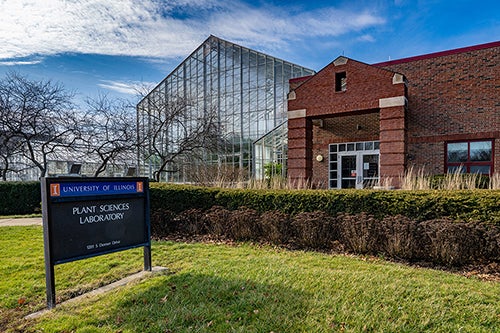
Anyone near campus with a green thumb—or at least an appreciation for it—has likely heard of the Plant Biology Greenhouse, including its popular 2,000 square-foot conservatory. As noteworthy as the local attraction has become in the past 30-plus years, efforts are underway to make the space even more educational and interactive.
“We’ve done a lot of changes,” said Heather Lash, coordinator of the Plant Biology Greenhouse.
The conservatory, consisting of a 37-foot greenhouse filled with a variety of trees and plants, is the face of the Plant Sciences Laboratory at 1201 S. Dorner Drive. The conservatory is the publicly available section of a larger complex of greenhouses that are mostly for research, though some collections are available for public inspection.
The collections in the conservatory and other public spaces are large and varied, including cacao and coffee plants, Hindu rope plants, Hoya plants, a banana tree, carnivorous plants such as the pitcher plant, Epiphytic orchids, and cycads, a plant type which has existed for some 300 million years. One plant on display is the titan arum, also known as the corpse flower, which once during its lifetime produces an awful-smelling, short-lived, large bloom that attracts flies and other carrion eaters as part of its pollination cycle. The tropical plant drew crowds when it bloomed in 2011, and it remains alive today, albeit not anything like the foul-smelling growth that it once was.
Lash, who has worked at the university for almost 20 years but took her current position a couple of years ago, saw a need to make the conservatory and an adjoining public collections area more visitor-friendly. The conservatory typically gets about 10 visitors per day, Lash said, though it also sees larger groups come through on tours and other occasions.
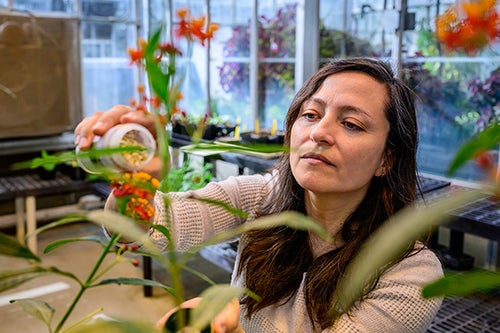
“The conservatory and collections are a wonderful space for observation and creativity,” said Lash. “I think making it more interactive will encourage further exploration of particular plants and plant science in general.”
Lash, who works for the Department of Plant Biology, oversees the conservatory and other research areas with a staff of five part-time student employees. They are working on labeling the plants, as many are mislabeled or not labeled at all.
The labels are intended to help educate visitors, but they also aid in creating an inventory for the staff. In addition to labels, the staff wants to add QR codes that guests can scan on their phones to access a webpage with more information about the specific plant.
“The majority of visitors coming through have their phone out for taking pictures of the plants and they are very picture-worthy,” Lash said. “However, if we can include QR codes or increase educational signage perhaps visitors will want to take a deeper dive into what they are observing and this could open up a new world for them.”
Lash hopes to incorporate labeling and QR codes for the insects present in the conservatory, which happen to be one of her areas of expertise. Certain insects, she notes, have the ability to control pests that are harmful to plants, and would be more environmentally friendly than pesticides. She has deployed some of these insects since starting in her current role.
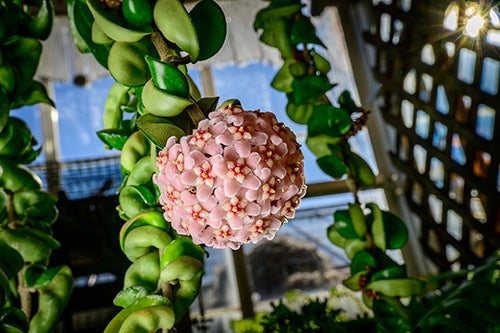
“We used to spray about 15 gallons of insecticide every week when I first started here about 17 years ago,” Lash told the Illinois News Bureau in a recent story. “And now I can go several weeks without having to spray anything at all.”
Lash expects the labeling process to be a long one. “I think we can probably complete it by the end of the year,” she said.
Lash has also developed an Instagram page, uiucplantbiogreenhouse, that offers a new way to communicate with the public. Posts include greenhouse hours, blooming plants, and upcoming events.
“We are (also) working on a website. That's another big thing we hope to complete this year,” Lash said. While the website will include useful information for the public, such as hours of operation, it will also serve as a resource for researchers looking to reserve space in the lab.
Significant maintenance updates are also underway, including lighting changes, new fertilizer injectors, new floor drains, floor traps, screen replacements, and a LED supplemental lighting upgrade, Lash said.
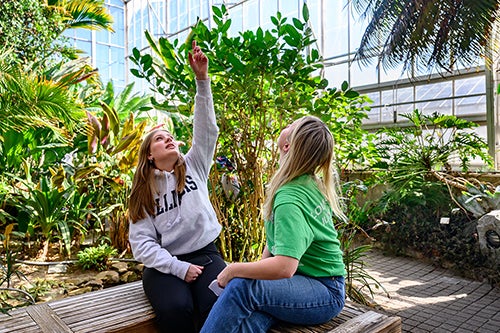
Though some of the greenhouse lighting is LED, much of it is high-intensity discharge (HID) lighting. For some, switching light sources to LED may seem insignificant, but for Lash, researchers, and the plants, the upgrade matters.
“We will expect to see not just energy saving but improved plant response,” she explained. “One thing we have been noticing is that with the LEDs the plants do grow differently than compared to HID lighting.” Under LED lighting, she added, they’ve found that plants grow faster and larger than they would under HID.
“We are getting the same type of LED that is in the rest of the plant sciences greenhouse,” Lash said. “For the first time we will be able to have uniform supplemental lighting so that will be at least one aspect that is consistent within research.”
While the new light source may be beneficial, the installation can be a bit disruptive, especially if researchers have already begun their study under the current HID lighting. For that reason, and others, the total LED conversion will likely not be complete until the end of summer.
As for some of the other upgrades, a new floor drain or even a fertilizer injector may not catch the eye of a visitor, but to Lash, researchers, and her staff, these sorts of housekeeping things are important for convenience and upkeep.
“They're not glamorous changes but they're really necessary,” Lash said.
Editor's note: Photos for this story were originally taken for an Illinois News Bureau Behind the Scenes story about upkeep at the greenhouse and conservatory.
